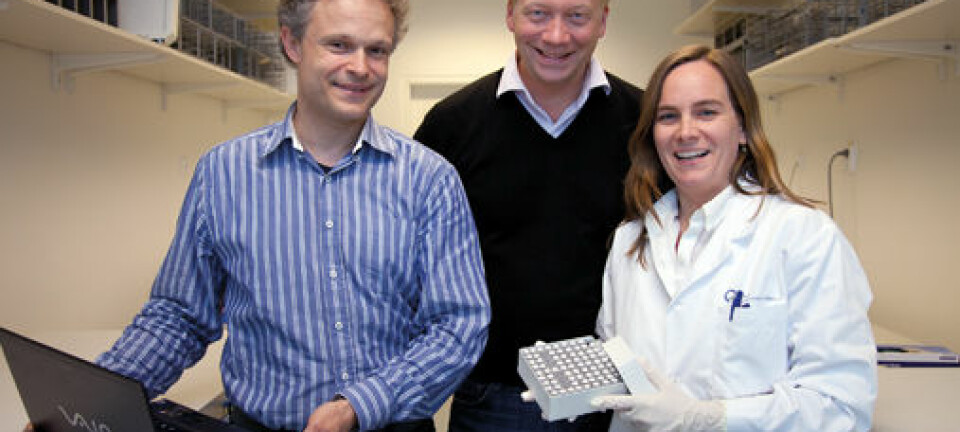
Renewed worries over carcinogens in foods
Acrylamide, a substance that can be formed during food preparation, has been linked with an increased cancer risk in the past. A new study brings us one step closer to proving that link.
When you roast potatoes or bake bread, acrylamide is formed in your food.
Over the past decade, scientists have been debating whether or not acrylamide in food increases the risk of cancer.
A new study indicates that there is indeed a link between this substance and an increased cancer risk.
“In 2008, we found evidence that women with high levels of acrylamide in their blood have an increased risk of developing breast cancer,” says the lead author of the study, Anja Olsen, a senior researcher at the Danish Cancer Society.
We have now seen that women who had high levels of acrylamide in their blood before their breast cancer diagnosis are more likely to die within approximately ten years of being diagnosed.
Anja Olsen
“In a follow-up study of the same women, we have now seen that women who had high levels of acrylamide in their blood before their breast cancer diagnosis are more likely to die within approximately ten years of being diagnosed."
This latest study is published in the journal Toxicology.
From work environments to the kitchen
Acrylamide has been known as a potential carcinogen for many years.
The substance is used in for instance the plastics industry, where it has been known to be a work environment risk. Acrylamide is also found in tobacco smoke.
Asking how many potatoes people eat is one thing. But to get good answers about exactly what temperature the oven had been set to during baking or how thoroughly the coffee had been roasted – that’s nearly impossible.
Anja Olsen
Since 2002, it has been known that the substance can also be formed during food preparation.
”In 2002, a group of Swedish researchers found acrylamide in the blood of people who had not been exposed to the substance neither in a work situation nor through smoking,” says Olsen.
“They also found that acrylamide is formed during the preparation of starchy foods such as potatoes, coffee and bread. This formation occurs through what’s known as the Maillard reaction, when food is heated above 120 degrees Celsius.”
Acrylamide could be a major public health threat
The discovery of acrylamide in foods sparked a discussion among scientists about the substance posing a public health threat.
The most important effect of our findings is that they have helped maintain a focus on acrylamide as a potential problem and I hope our work will contribute to acrylamide’s role in public health being fully investigated.
Anja Olsen
“In terms of public health, this is a rather delicate matter, since it deals with something we’re all exposed to every day.”
The way to examine the impact that acrylamide had on public health used to be through population studies that were already in progress.
Here, scientists tried to calculate how much acrylamide the participants had consumed through their food and then check if the amount appeared to have an effect on these people’s cancer risk.
It turned out, however, to be extremely difficult to get good answers from this kind of study:
“Asking how many potatoes people eat is one thing,” says the researcher. “But to get good answers about exactly what temperature the oven had been set to during baking or how thoroughly the coffee had been roasted – that’s nearly impossible.”
A different approach
Olsen and her colleagues have taken another approach. With the aid of researchers from the Technical University of Denmark, Aarhus University and Aalborg University, she examined acrylamide contents in the bloodstream of people who participated in the Danish population study ‘Kost, Kræft og Helbred’ (‘Diet, Cancer and Health).
When we consume acrylamide through food, it is absorbed in the intestine, from where it travels into the bloodstream. In the blood, the substance binds to the red blood cells, either as acrylamide or as the decomposition product glycidamide.
Using blood samples from the participants in the population study, the scientists could then make a chemical analysis of how much acrylamide each individual had been exposed to in the past three to four months, which is the lifespan of red blood cells.
”When we analysed the amounts of acrylamide in the blood, we saw indications that individuals with high levels of acrylamide in their blood also had a higher risk of developing cancer,” says Olsen.
“We examined 420 women who had developed breast cancer and compared their acrylamide levels with those of 420 healthy women. Here we noticed that women who have developed breast cancer appeared to have slightly higher levels of acrylamide before their disease broke out:”
Acrylamide reduces chance of survival
In addition to examining the correlation between acrylamide and increased cancer risk, Olsen also examined how the amount of acrylamide affected the ability to survive the disease.
Here she noted that for the women suffering from breast cancer, the chance of surviving their cancer was lower for those with high levels of acrylamide than for those with low levels of the substance.
“Out of the 420 women we studied, 80 died of their breast cancer within approximately ten years. Here we could see a higher mortality among women with high levels of acrylamide in their blood.”
Too early for new recommendations
Despite the indications from the new study, Olsen believes it’s too early to send out new recommendations regarding food preparation:
“We are the first ones to have made studies of this type, and if you take a critical look at our work, you’ll see that there’s room for improvement,” she says.
”We have a much better study coming up, and we hope that other researchers will also contribute to this field. The most important effect of our findings is that they have helped maintain a focus on acrylamide as a potential problem and I hope our work will contribute to acrylamide’s role in public health being fully investigated. Only when we have a full picture of the correlation will we decide whether new recommendations should be implemented in this field.”
In fact, the researcher hopes her findings cannot be replicated:
”It would be a very complex situation if it turns out that common foods such as coffee and crispbread contain a carcinogen.”
Nevertheless, the new findings have been passed on to the European Food Safety Authority (EFSA) and the World Health Organization (WHO).
-----------------------------------------
Read the Danish version of this article at videnskab.dk
Translated by: Dann Vinther














